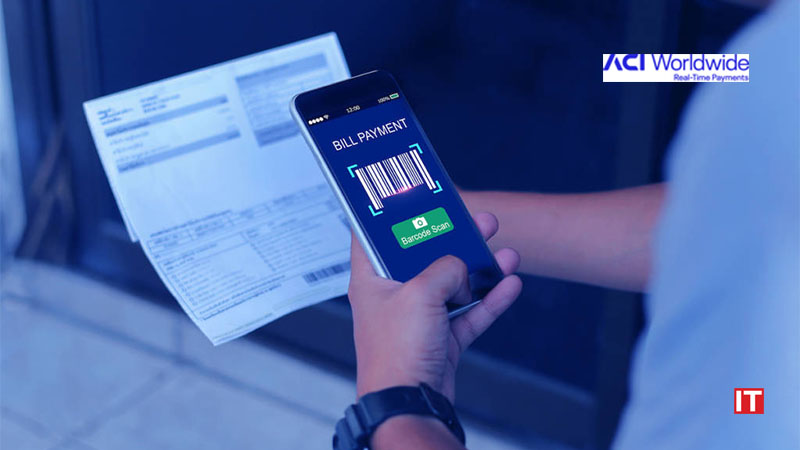Latin America is poised to reap significant economic growth accelerated by the adoption of real-time payments, despite the region’s fractured financial infrastructure and continued appetite for paper-based transactions, according to the third edition of Prime Time for Real Time 2022, published by ACI Worldwide, (NASDAQ: ACIW), in partnership with GlobalData, a leading data and analytics company, and the Centre for Economics and Business Research (Cebr).
The report – tracking real-time payments volumes and growth across 53 countries – includes an economic impact study for the first time, providing a comprehensive view of the economic benefits of real-time payments for consumers, businesses and the broader economy across 30 countries. The report covers all G20 nations, excluding Russia. *
The research shows that governments that advance the real-time modernization of their national payments infrastructure create a win-win situation for all stakeholders in the payments ecosystem: consumers and businesses benefit from fast, frictionless and hyper-connected payments services, financial institutions future-proof their business in a highly competitive environment by speeding up cloud-first and data-centric modernization, and national governments boost economic growth, reduce the size of their shadow economy and create a fairer financial system for all.
Latin America Highlights:
The top three economies – Brazil, Argentina and Mexico – are set to see huge economic gains over next five years, with Argentina and Brazil projected to deliver seven and tenfold increases, respectively, in economic benefits and savings driven by real-time payments
Brazil:
Brazil leads and drives the region’s real-time payments volumes and growth: In 2021, the country recorded 8.7 billion real-time transactions, mainly due to the rapid growth in popularity of the PIX instant payments system.
The widespread adoption of real-time payments resulted in estimated cost savings of $US5.7 billion for businesses and consumers in 2021, which helped unlock $US5.5 billion of additional economic output (0.34% of the country’s GDP).
With real-time payments transaction numbers expected to rise to 82.4 billion annually by 2026, net savings for consumers and businesses are forecast to climb to $US37.9 billion in the same timeframe. This is expected to help generate an additional $US37.6 billion of economic output (equivalent to 2.08% of the country’s forecasted GDP).
Of all 30 countries covered in the Cebr economic impact study, Brazil has the largest 5-year forecast GDP facilitated by real-time payments in percentage terms – 2.08 % by 2026.
Mexico:
Despite being LATAM’s real-time payments pioneer, Mexico has seen slower adoption than its neighbors, primarily due to a large unbanked population and a fundamental lack of electronic payment awareness.
In 2021, real-time payments transaction volumes reached 1.6 billion, with estimated cost savings for businesses and consumers of $US1 billion. This helped unlock $US1.9 billion of additional economic output, equivalent to 0.15 % of GDP.
With real-time payments transactions set to peak at 2.6 billion in 2026, net savings for businesses and consumers are forecast to reach $US1.3 billion, helping to generate an additional $US2.8 billion of economic output, equivalent to 0.19 % of the country’s forecasted GDP.
Argentina:
Real-time payments supported $US15 million of additional economic output, equivalent to 0.003% of formal GDP in 2021, forecast to rise to $US183 million and 0.03 % in 2026, respectively.
Also Read: Veracode Named a Leader in the 2022 Gartner® Magic…
For South America’s second-largest economy, the economic benefits of real-time payments remain largely untapped. According to the Cebr, the theoretical impact of all payments being real-time could add 4 % to formal GDP by 2026 – though this figure does not suggest that there is no longer place for non-instant electronic payments or paper-based payments in the future.
“LATAM has an incredible opportunity and the momentum to drive economic growth and financial inclusion with real-time payments,” said Leonardo Escobar, Head of LATAM, ACI Worldwide. “Given the potential savings and economic benefits currently being left on the table, even a moderate shift to real-time will significantly impact our economic future. It is time for governments and corporate champions to play their part in our efforts to lead the world in real-time payments.”
“Without government mandates, many financial institutions have little incentive to transform their technology. Many success stories worldwide, including in Asia, serve as a blueprint for LATAM to successfully drive real-time payments further,” Escobar added.
“By allowing for the transfer of money between parties within seconds rather than days, real-time payments improve overall market efficiencies in the economy,” commented Owen Good, Head of Advisory, Centre for Economic and Business Research. “Real-time payments improve liquidity in the financial system and therefore function as a catalyst for economic growth. This is especially important for our fast-paced and digital-led gig economies.


































